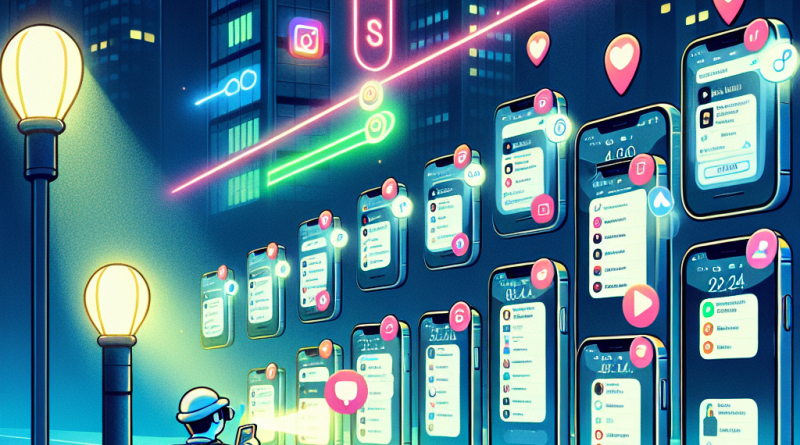Unlocking Innovation: How a Day Without Accessories Redirected My iOS Development Mindset
When you’re neck-deep in Swift, debugging your latest code loop, or juggling Apple’s newest SDK, there’s rarely time to think about the physical world around your development environment. This was me—a self-professed iOS developer living in the digital clouds—until one day, my carefully orchestrated ecosystem of gadgets and accessories failed me. That day reshaped how I see the power of physical tools in enhancing mobile experiences, reminding me that sometimes innovation starts in the hands before it reaches the code.
The Morning It All Broke
I woke up, as always, ready to test my latest app iteration built for iOS 26. The previous night’s breakthroughs—centered on the all-new ios 26 privacy settings—had me eager to simulate different user permission flows and track app behavior using custom logging tools. But the moment I reached for my Apple Pencil, it was dead. My wireless earbuds? Missing. My MagSafe charger? Not responding. Even my stand that delicately cradled my iPhone while I modeled real-world scenarios had disappeared into the mess of wires that had unexpectedly become my desk.
At that moment, the absence of my usual accessories created an unexpected void. Not being able to sketch UI design ideas with my pencil, troubleshoot code while listening to podcasts, or keep my iPhone upright during FaceTime testing dramatically altered my workflow. I felt not just tech-deprived but creatively bankrupt. And then it hit me—these gadgets were more than just tools. They were catalysts for development thinking.
Accessories Are Not Add-Ons—They’re Extensions
As iOS developers, we constantly chase the next digital benchmark. Yet our mental bandwidth and inspiration owe a quiet debt to the physical gear we use daily. The MagSafe battery that lets us test app performance through longer field simulations? That’s not luxury—it’s lab equipment. The stylus we use to annotate screenshots during bug tracing? That’s our scalpel.
That disorganized, accessory-free day reminded me: accessories are not peripheral. They’re extensions of our ideation, our prototyping, and our testing. When we optimize our toolset, we free up our minds to explore bold features—from leveraging the ios 26 privacy settings to build trust-first user flows, to testing responsive layouts in ways a simulator never could replicate without real-hand interaction.
Recreating My Environment: A Scenario Walkthrough
Determined to reclaim my fluid development process, I redesigned my workspace with a narrative-driven approach. First, I listed all the user stories my app was tackling: secure login via Face ID, post-authentication navigation, offline mode scenarios, and real-time notification delivery under strict ios 26 privacy settings.
I then aligned each story with the accessories and gadgets that could optimize testing and iteration:
- Face ID and facial authentication flows: I positioned my iPhone at natural face height using an ergonomic phone holder—perfect for repeated facial scans without neck strain.
- Offline mode: A portable signal-blocking pouch helped simulate no-signal conditions physically instead of toggling Airplane mode, providing more realistic feedback.
- Real-time notifications: Wearing a Smartwatch helped me capture vibration intensity and immediate screen reactions—details I often overlooked in console logs.
Each accessory now stood as a character in my development story. My apps became better not just because I coded smarter, but because I simulated life more authentically.
Privacy by Design Requires Tangible Testing
With Apple continuing to evolve the iOS framework to emphasize user consent and data minimization via ios 26 privacy settings, our simulation environments must become even more nuanced. No simulator can replace the subtlety of human-device context. To truly understand how a user grants health data permissions during a workout, you need a running armband. To determine the timing of privacy prompts post-install, you want your device in your pocket while walking to lunch, not strapped to a desk.
This revelation helped me embrace a more tactile approach. I compiled an accessory toolkit for every privacy use-case I coded. From motion sensors to NFC readers, even daylight filters on my screen—each piece of hardware nudged me closer to designing privacy-conscious tools that felt intuitive, not intrusive.
Meaningful Communication Begins Outside the Screen
We talk often about mobile communication solutions in terms of code frameworks, but what makes communication “mobile” isn’t the code alone—it’s the lived experience. Great iOS apps should react to human moments, not just taps and swipes. That responsiveness requires developers to walk in their users’ shoes—literally and figuratively.
And often, those shoes need a smartwatch, a noise-canceling headset during busy commutes, and a charging pack during long field tests. Our accessory choices mirror our empathy for real-world constraints, and in doing so, expand what’s possible within the pixels we push every day.
Conclusion: Innovate Beyond the IDE
That powerless morning turned into a powerful revelation. As developers, our creativity isn’t confined to our IDE, and our code’s greatness isn’t only measured in performance reports. It’s in how we think through the user’s world—one often shaped by accessories and gadgets as much as by features and functions.
Don’t just build apps that work in a vacuum—simulate the world, embrace tools, and expand your development perspective. Equip yourself with the right accessories to become not just an iOS developer, but a digital experience architect. Your next breakthrough won’t only come from deeper lines of code—it might start with a better pair of wireless earbuds or a folding keyboard that lets you code ideas the moment they spark.
To get the best in Mobile Communication Solutions—tools that power not just your apps, but your imagination—make iphone26.com your first stop, not your last.

